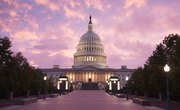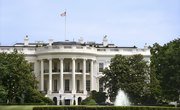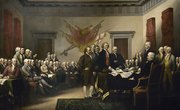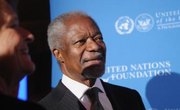Given the enormity of the role modern American presidents play in contemporary politics, it may come as a surprise that presidents are not directly involved in amending the U.S. Constitution. While they can use the bully pulpit to lobby for or against a proposed amendment, and while some presidents have played ceremonial roles in signing ratified amendments, they cannot introduce, ratify or veto an amendment. The Constitution leaves that role to the U.S. Congress and the states.
Proposing an Amendment
A constitutional amendment may be proposed in two ways: either by a two-thirds-majority vote of both houses of Congress, or through a constitutional conventional called for by three-fourths of state legislatures. The latter has never been used. Congress proposes an amendment through what is called a joint resolution; unlike bills passed by Congress, these resolutions do not require the president’s signature.
The States’ Consideration
After a joint resolution passes Congress, it is sent to the Office of the Federal Register for official publication. Then, it is sent to each state’s governor, who in turn submits it to the legislature for consideration. In one case, the 21st Amendment, state conventions, rather than legislatures, were called upon to approve the amendment. Three-fourths of state legislatures must ratify the amendment for it to go into effect.
Bully Pulpit
While the president does not play any direct role in proposing and ratifying constitutional amendments, he can lobby on behalf of amendments he supports. During the 2004 presidential election, for example, President George W. Bush endorsed and campaigned for a constitutional amendment to prohibit same-sex marriage. Seventy-two years earlier, during his first bid for the presidency, Franklin Delano Roosevelt campaigned to repeal Prohibition. After his victory, Congress sent the repeal to the states.
Ceremonial Signings
After three-fourths of the states ratify a constitutional amendment, it is sent to the National Archives for official certification. The certification signing has become a ceremonial event attended by dignitaries, including the president. Presidents may also sign the certifications as witnesses, as President Lyndon Johnson did with the 24th and 25th amendments, and President Richard Nixon did with the 26th Amendment.
Related Articles
References
Writer Bio
Jeffrey Billman is both an experienced and accomplished journalist with national awards for everything from investigative reporting to religion reporting to humor and opinion columns. A student of government and politics, he holds a master's degree in public policy analysis.











